From the 1976 Tony Awards telecast, the original cast of A Chorus Line performs “I Hope I Get It”:
Archives for 2011
TT: Almanac
“The supposition that the world is ever in league to put a man down is childish. Hardly less childish is it for an author to lay the blame on reviewers. A good sturdy author is a match for a hundred reviewers.”
Samuel Butler, The Note-Books of Samuel Butler
TT: Waving goodbye
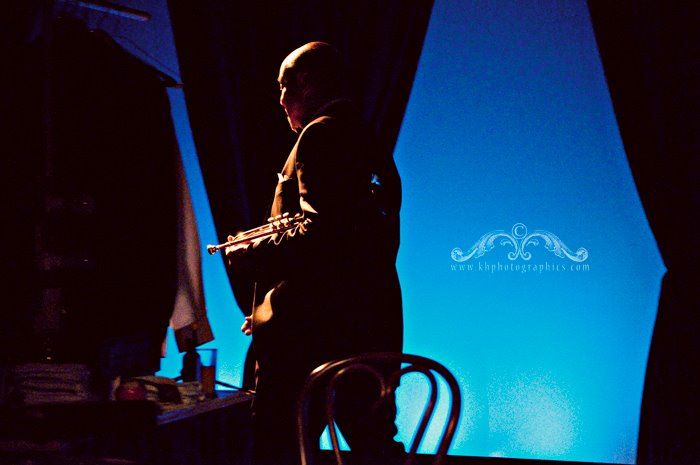 Mrs. T and I saw the Sunday matinee of Satchmo at the Waldorf in Orlando, then joined the cast and crew for homemade gumbo. Today we’ll drive to the Orlando airport and go our (temporarily) separate ways, she to Connecticut and I to Washington, D.C., where I’ll be seeing the American premiere of Alan Bennett’s The Habit of Art on Tuesday. I hate to leave my own show behind, but duty calls, and at least I got to see the first four performances.
Mrs. T and I saw the Sunday matinee of Satchmo at the Waldorf in Orlando, then joined the cast and crew for homemade gumbo. Today we’ll drive to the Orlando airport and go our (temporarily) separate ways, she to Connecticut and I to Washington, D.C., where I’ll be seeing the American premiere of Alan Bennett’s The Habit of Art on Tuesday. I hate to leave my own show behind, but duty calls, and at least I got to see the first four performances.
I’ve learned a lot in the past week and a half. Watching Rus Blackwell direct my play was an education in itself. I liked what he did so much that I’ve already written into the script several pieces of business that were devised by Rus. William Elliott, who designed the set and lighting, went to enormous trouble to create an evocative space that drew the audience in, and we had the supreme pleasure of working with a fabulous crew. Many, many thanks to Holly Bennett, Cindy Karr, and Jamie Mykins, who made all the rough places plain.
As for Dennis Neal, there aren’t enough words in the English language to describe what he did with the double role of Louis Armstrong and Joe Glaser. All I can say is that as I sat in the theater, I said to myself, “My God, he looks like Satchmo now—and they don’t even look alike!” The last time I saw an actor bring off so radical a transformation was when Frank Langella starred in the Broadway transfer of Frost/Nixon. Dennis is a true artist, and I’ve never been luckier in my life than when Rollins College brought us together in February to do the first public reading of Satchmo at the Waldorf.
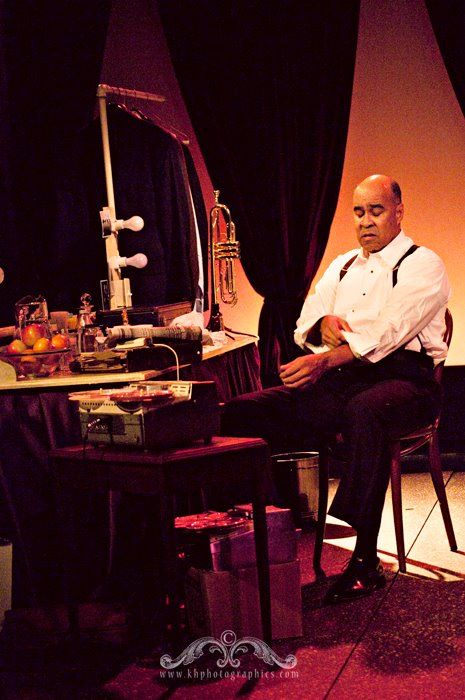 Rus and Dennis cut a thousand words out of the play during the first week of rehearsals. I realized as soon as I got to Orlando that the script was much the better for having been tightened up so judiciously. I made some additional cuts of my own, and by the time we opened on Thursday, the pacing was right where I wanted it to be. It was fascinating to see how the audience’s response varied from night to night. The opening-night crowd laughed so loudly at the first act that they could have been watching Noises Off. On Friday, by contrast, the play was received with total seriousness and involvement, as if it were a deadly serious drama (which, of course, it is, the punch lines notwithstanding). Much to my delight, Dennis was quick to pick up the mood of the house each night and shape his performance accordingly. That’s professionalism.
Rus and Dennis cut a thousand words out of the play during the first week of rehearsals. I realized as soon as I got to Orlando that the script was much the better for having been tightened up so judiciously. I made some additional cuts of my own, and by the time we opened on Thursday, the pacing was right where I wanted it to be. It was fascinating to see how the audience’s response varied from night to night. The opening-night crowd laughed so loudly at the first act that they could have been watching Noises Off. On Friday, by contrast, the play was received with total seriousness and involvement, as if it were a deadly serious drama (which, of course, it is, the punch lines notwithstanding). Much to my delight, Dennis was quick to pick up the mood of the house each night and shape his performance accordingly. That’s professionalism.
Satchmo at the Waldorf runs through October 2. After that…well, who knows? Dennis and Rus want to produce it elsewhere, which would suit me right down to the ground. But no matter what happens in the future, I can say with pride that in addition to being a critic, biographer, and opera librettist, I’m now a full-fledged professional playwright. I went into the arena and came back in one piece. Like the song says, they can’t take that away from me!
* * *
Here’s a lovely picture of Armstrong’s original All Stars, taken on stage in New Orleans in 1949:
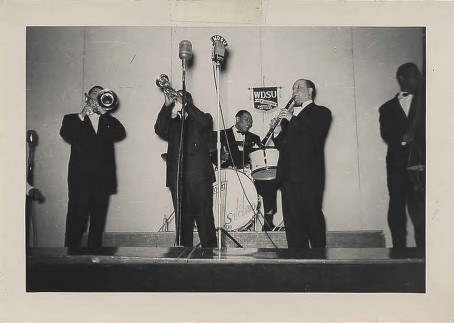
TT: Just because
Frank Sinatra and Peggy Lee sing “Nice Work if You Can Get It”:
TT: Almanac
”Books should be tried by a judge and jury as though they were crimes, and counsel should be heard on both sides.”
Samuel Butler, The Note-Books of Samuel Butler
HOW TWO GREAT CRITICS COMPROMISED THEIR POSTHUMOUS REPUTATIONS
“Clement Greenberg and Virgil Thomson were critics of the first rank. Indeed, Mr. Greenberg was one of the most deservedly influential art critics of the 20th century, while Mr. Thomson is generally regarded as the finest classical-music critic ever to have written for a U.S. newspaper. The world of art would be the poorer had they chosen not to write about it—but for as long as their work is read, some people will wonder whether they could be bought…”
TT: It works
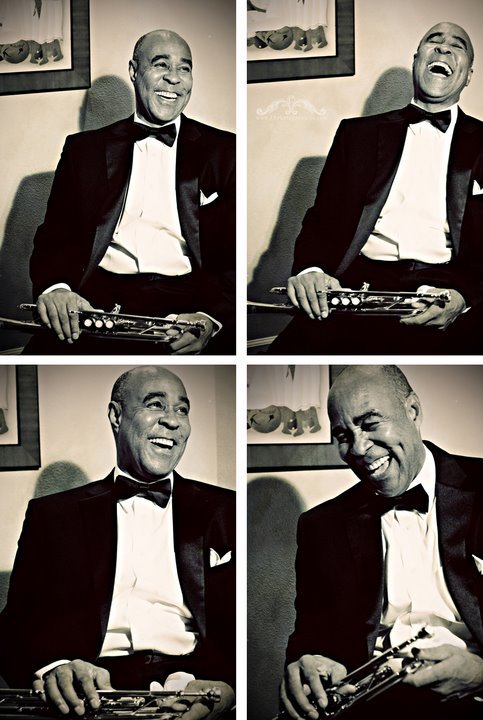 Satchmo at the Waldorf was successful in every way. The house was sold out and the audience gave every indication of loving the show from start to finish. I had no idea that it was so funny. The first act actually played like a comedy. Not so the second half of the second act, which was received in a rapt hush. As for the cheers at the end…well, let’s just call them damned gratifying.
Satchmo at the Waldorf was successful in every way. The house was sold out and the audience gave every indication of loving the show from start to finish. I had no idea that it was so funny. The first act actually played like a comedy. Not so the second half of the second act, which was received in a rapt hush. As for the cheers at the end…well, let’s just call them damned gratifying.
I could spend a lot of time thanking a lot of people, and believe me, I will—but not just yet. I got home a half-hour ago, and I’m so tired I could drop. For now, let me just say that were it not for Hilary Teachout, my beloved Mrs. T, I’d have never worked up the nerve to write my first play, much less to see it through seventeen painstakingly revised drafts and onto the stage of Orlando’s Mandell Theatre. All praise to Dennis Neal, Rus Blackwell, and the rest of my wonderful colleagues, but she comes first.
More anon, but I’ll close with the final speech of the play:
ARMSTRONG (raising his voice) I’m just about done, sugar. (As before) Guess Lucille’s right. Done told my story, said what I gotta say. And now I gotta get to bed, get me some rest like the doc says. Got two shows to play tomorrow, gotta take care of myself. You wanna please the people, get you a good night’s sleep. Playing that pretty music every night take a lot out of an old man.
He puts on his glasses and picks up his trumpet case.
You go that way, I go this way. And we gonna do it all over again tomorrow night. Just like always.
He opens the dressing-room door, switches off the light, and exits, closing the door behind him. Blackout.
See you next week.
UPDATE: To view an album of photos shot at the dress rehearsal of Satchmo at the Waldorf, go here.
TT: “When faith draws blood”
In today’s Wall Street Journal drama column I write about Hartford Stage’s revival of The Crucible and the Broadway transfer of the Kennedy Center production of Follies. Here’s an excerpt.
* * *
Time has been unexpectedly kind to “The Crucible.” Arthur Miller’s history play about the Salem witch trials was written at the height of the McCarthy era, and most of the critics who saw it back then found the parallels that Miller drew between Salem in 1693 and Washington, D.C., in 1953 to be grossly heavy-handed. Nor was their displeasure politically motivated. Kenneth Tynan, whose own politics were far to the left of center, wrote that “The Crucible” “has the over-simplifications of poster art.” He was right, too: “The Crucible” is an either/or moral melodrama whose characters are as flat as picket signs. But it is also, like Lillian Hellman’s “The Little Foxes,” a consummately effective piece of theater that carries the emotional charge of a really good B movie. Moreover, the passage of time has made it possible for “The Crucible” to be staged not as a connect-the-dots allegory about McCarthyism but as a cautionary tale of what can happen whenever zealots of any kind—fascists, Communists, religious fanatics, PC enforcers—reach out for the levers of power.
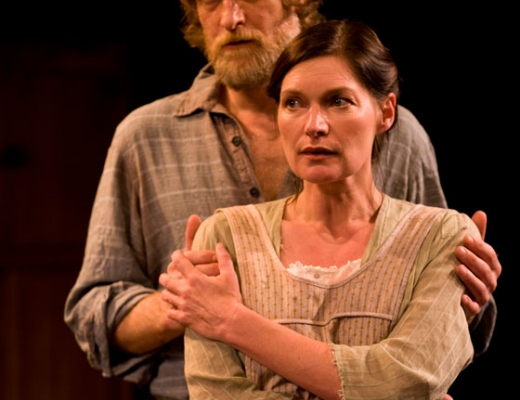 In his riveting Hartford Stage revival of “The Crucible,” Gordon Edelstein has shrewdly cut the play loose from its familiar 17th-century moorings. Ilona Somogyi’s costumes and Eugene Lee’s bare-bones set suggest that the play is taking place early in the 20th century, possibly in the Bible Belt around the time of the Scopes trial. On the other hand, Michael Chybowski has lit the courtroom with fluorescent fixtures that are as modern-looking as a flat-screen TV. The effect is deliberately disorienting, and no sooner is the audience thrown off balance than Mr. Edelstein moves in for the kill. From the slap-in-the-face coup de théâtre that launches the play to the death march that drives it to a thunderous close, this “Crucible” will send your pulse rate shooting through the roof….
In his riveting Hartford Stage revival of “The Crucible,” Gordon Edelstein has shrewdly cut the play loose from its familiar 17th-century moorings. Ilona Somogyi’s costumes and Eugene Lee’s bare-bones set suggest that the play is taking place early in the 20th century, possibly in the Bible Belt around the time of the Scopes trial. On the other hand, Michael Chybowski has lit the courtroom with fluorescent fixtures that are as modern-looking as a flat-screen TV. The effect is deliberately disorienting, and no sooner is the audience thrown off balance than Mr. Edelstein moves in for the kill. From the slap-in-the-face coup de théâtre that launches the play to the death march that drives it to a thunderous close, this “Crucible” will send your pulse rate shooting through the roof….
This is a banner year for “Follies,” the 1971 Stephen Sondheim-James Goldman musical in which the splintered hopes of two middle-aged married couples are flung against the gaudy backdrop of an old-fashioned bring-on-the-girls revue. Not only is Gary Griffin about to stage a major revival of “Follies” for Chicago Shakespeare, but Eric Schaeffer’s superlative Kennedy Center production, which had a deservedly successful run earlier this year in Washington, has just moved to Broadway with its formidable virtues fully intact. Jan Maxwell, Bernadette Peters, Danny Burstein and Ron Raines, the stars of the Kennedy Center cast, are all present and accounted for. Though Ms. Peters is in fragile voice, her acting is touchingly intense, and her colleagues, Mr. Burstein in particular, give powerhouse performances that couldn’t be bettered….
* * *
Read the whole thing here.
